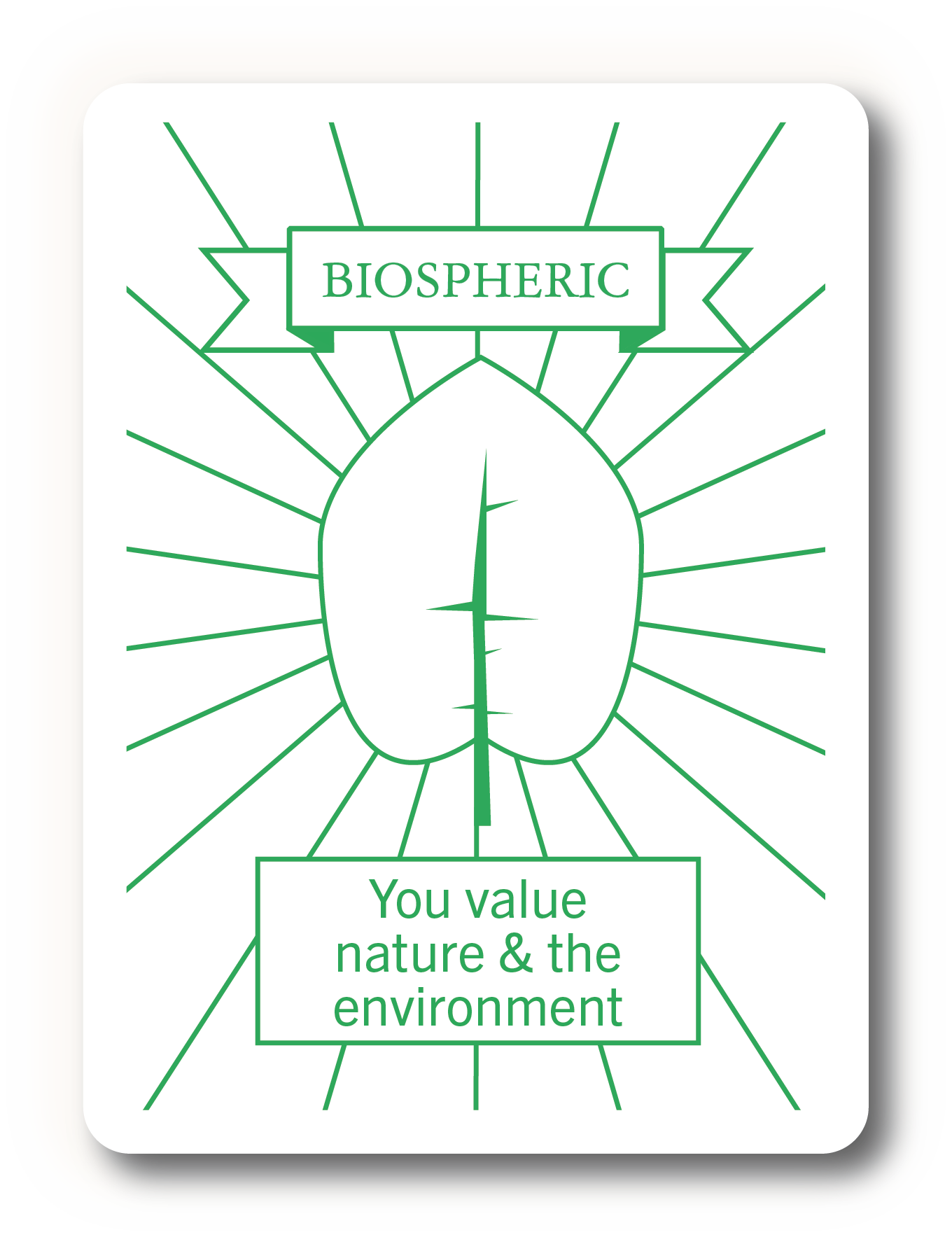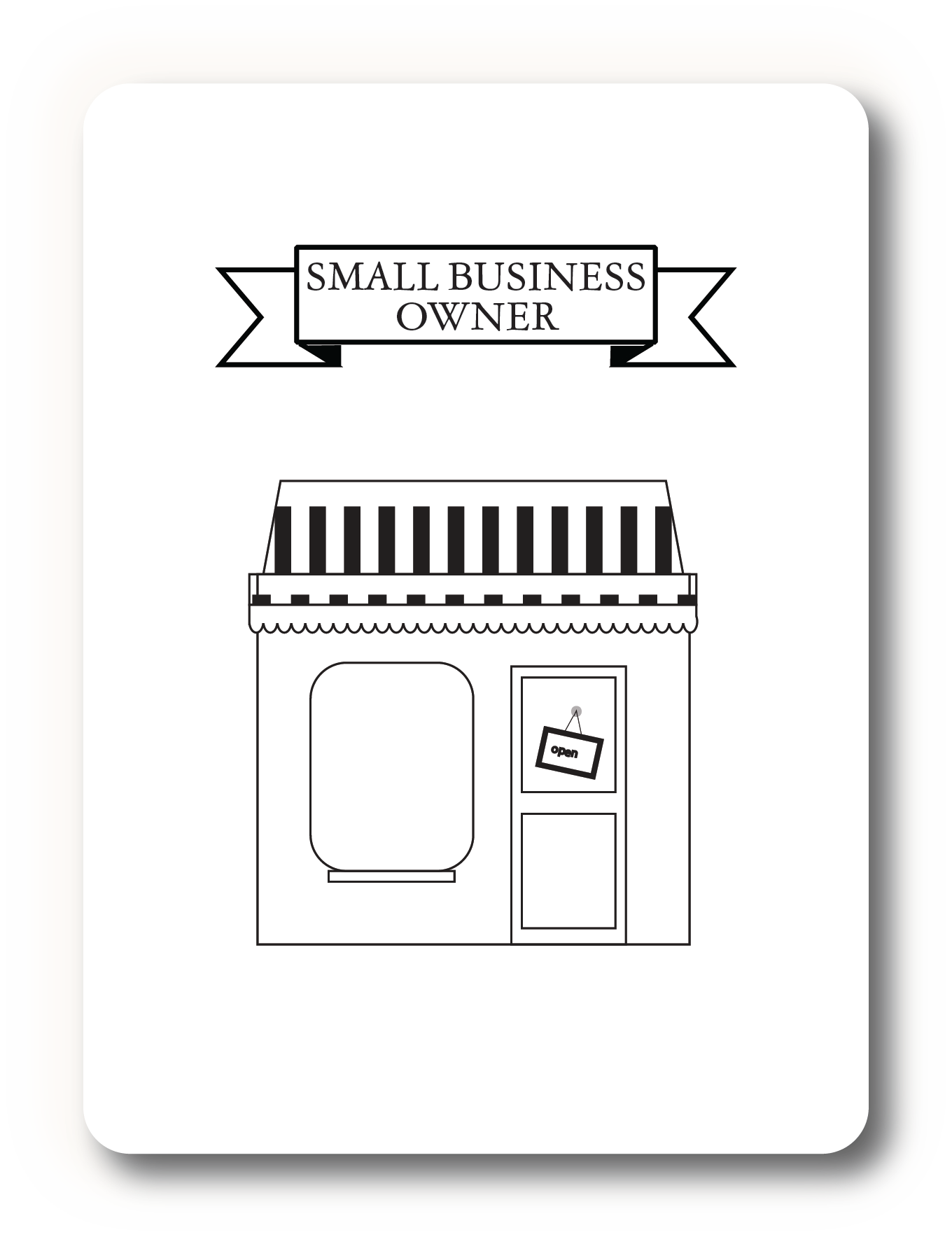Elements of the game
- Number of players: 3-6
- Play time: 20-60 minutes (depending on the version that is played)
- Instruction booklet
- 150 Cards (the letters are printed on the backs of the cards)



- Values (4 value definition cards + 10 value priority cards)



- Innovations (6 scenario cards + 48 characteristics cards)


- Emotions (72 emotion cards)


- Wise decisions (4 cards containing discussion questions)


- Stakeholders (6 cards – these are optional additions to the game)
Option 1: The Fast Track (20 min)
Aim:
Guess your own values, based on the emotion clues that the other players give you.
Set up:
Set out the emotions cards in draw piles. Lay out the value definition cards. Choose an innovation scenario. Deal all players a value priority card (large symbols are high priority values, small symbols are low priority values). Do not look at your own card until the end of the game!
Gameplay:
Reveal the first characteristic card (to increase the difficulty, reveal two cards, placing one card above the other). Choose a player to start. Player 1 holds up their value perspective card to the other players. The other players discuss how Player 1 would feel about the characteristic (but don’t mention Player 1’s values!). They then put an emotion card in front of Player 1. Repeat for each player. Once all players have an emotion card, reveal the next characteristic. Work together to give all players an emotion card. Repeat until everyone has four emotion cards. Finally, each player guesses their own values, based on the characteristics cards and their emotion cards.
Option 2: The Public Assembly (60 min)
Aims:
Guess the values of the other players and then work together to design a more socially-responsible innovation.
Set up:
Set out the emotions cards in draw piles. Lay out the value definition cards. Choose an innovation scenario. Deal all players a value priority card (hide from the others) and a stakeholder card (show to the others). If desired, create new stakeholder roles that are more relevant to the scenario. Stakeholder roles provide additional interests that can shape responses to the innovation, beyond one’s values.
Gameplay:
Reveal the first innovation characteristic card (to increase the difficulty, reveal two cards simultaneously). All players consider how they feel about this characteristic, based on their values (large symbols = high priority values, small symbols = low priority values). Choose one player to start. Player 1 lays out one emotion card and explains it (e.g. “I feel a little/very… happy, excited, enthusiastic, conflicted, sad, angry, annoyed, neutral, etc.). They can also choose to provide a brief argument or explanation relating to their stakeholder role (e.g. “As a small business owner, I like the idea of spending less on electricity”). This explanation can be creative and does not necessarily need to correspond with their values. However, the emotion card should always reflect their values. Repeat for each player. Try to figure out what values underlie other players’ emotions, but don’t share your guesses yet! Once all players have explained their emotion, lay out the next innovation characteristic. Repeat rounds until everyone has four emotion cards in front of them. All players then work together to infer the other players’ values. Finally, work through the questions on the wise decisions cards as a team.
Option 3: A Simplified Public Assembly (40 min)
Same as Option 2, but without stakeholder cards (i.e. players only describe their emotions).
Option 4: Tailor-Made Scenarios (90 min)
Same as Option 2, but you can first create your own innovation scenario and characteristics cards.

